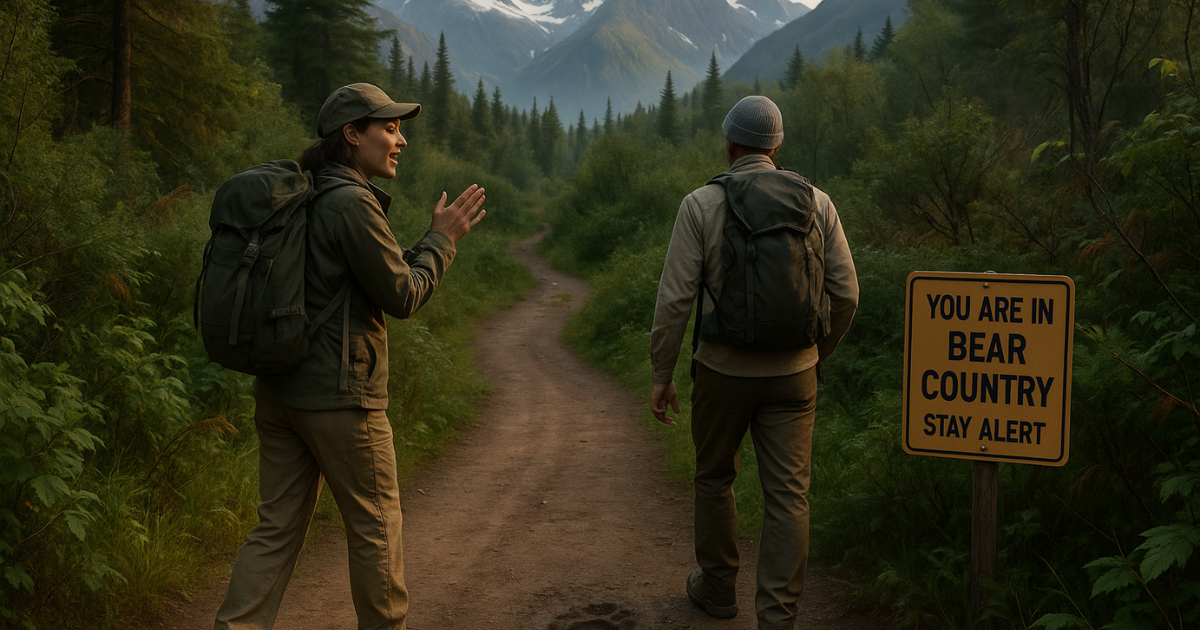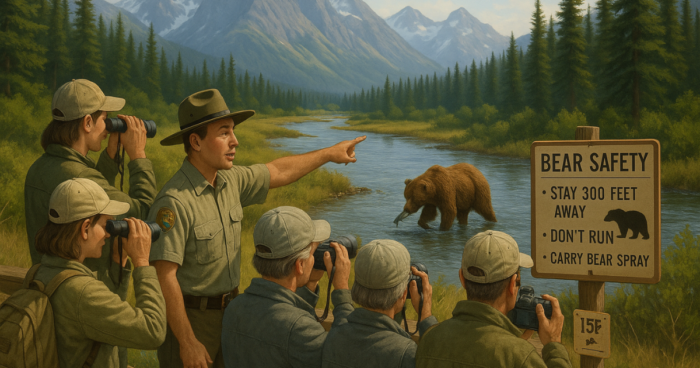Whether you’re hiking deep into Alaska’s wilderness or exploring national parks in Canada, safety tips for viewing bears in the wild should be your first priority. With bear tourism on the rise, especially in the North, being prepared ensures unforgettable sightings that are also safe for both humans and wildlife.
Why Bear Safety Matters When Exploring the Wild
The thrill of seeing a bear in its natural habitat is unmatched, but that moment can quickly turn dangerous without the right precautions. With the increasing overlap of human recreation and bear habitats, especially in national parks and backcountry areas, the potential for human-bear conflict rises.
If you’re visiting Alaska on a cruise, like a Royal Caribbean Alaska tour, unexpected wildlife encounters are common near ports, trails, and even campsites. Growing wildlife tourism means education and awareness are more important than ever.
Know Your Bears – Black vs Grizzly Behavior
Before stepping onto the trail, it’s crucial to understand the differences between Ursus americanus (black bears) and Ursus arctos (grizzly bears). Their behaviors and responses to humans vary significantly.
Black Bears:
- More likely to flee when surprised
- Excellent climbers often seek trees for safety
- Generally less aggressive
Grizzly Bears:
- May defend themselves aggressively
- Less likely to climb, more likely to charge
- Often defend food sources or cubs
Tip: Never run – understand which bear you’re dealing with and respond accordingly.
Stay Alert – Best Practices While Hiking in Bear Country

Make Noise to Avoid Surprises
Talking, clapping, or using bear bells helps notify bears of your presence. This is especially important on wooded trails or popular spots like Alaska’s Kenai Peninsula, Denali trails, or Chilkat Pass.
Travel in Groups When Possible
Hiking in groups of three or more significantly reduces the risk of negative encounters. Many guided bear viewing tours include expert wildlife rangers or park guides who know the signs and behaviors to watch for.
Secure Your Food and Scented Items
Store food using bear canisters or smell-proof bags. Even lip balm or wrappers can attract a bear. If you’re camping or on a multi-day trek, follow Leave No Trace principles.
What to Do If You Encounter a Bear
If you see a bear, stay calm and assess the situation. Your response should depend on the species and bear behavior.
|
Bear Type |
If the Bear Charges |
If the Bear Approaches |
If It Attacks |
|
Grizzly |
Play dead |
Back away slowly |
Stay down, protect neck |
|
Black Bear |
Stand your ground |
Make noise, appear large |
Fight back aggressively |
Always Carry Bear Spray (And Know How to Use It)
Carrying EPA-approved bear spray is strongly recommended in bear country. It’s highly effective at deterring both black and grizzly bears without causing permanent harm.
How to use bear spray:
- Keep it holstered and accessible at all times
- Aim slightly downward and toward the bear when it’s 30–60 feet away
- Spray in short bursts to create a barrier between you and the bear
Follow National Park Guidelines and Local Rules
Always follow local wildlife management rules, including food storage policies and posted trail advisories. Park rangers often provide updated information on bear activity.
If you’re joining an Alaska cruise excursion, always attend the pre-tour safety briefing and follow your guide’s instructions.
Final Thoughts
Whether you’re hiking, cruising, or wildlife-watching, these bear safety strategies are essential. Respecting bears and their habitat means fewer conflicts and safer adventures.


